Asus W5F Core Duo Notebook Review
Asus W5F Core Duo Notebook
The Asus W5F gives you dual-core power in a attractive, small and light package. What's not to like?
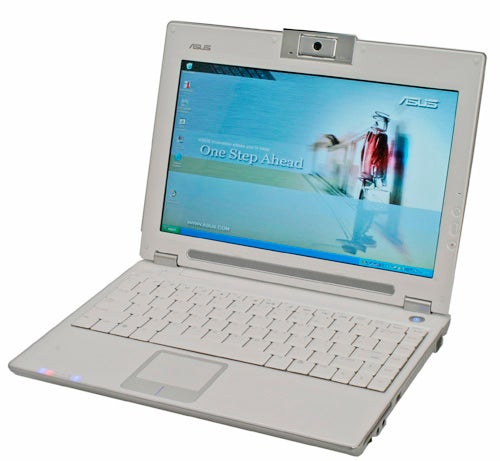
Verdict
Key Specifications
- Review Price: £1399.00
The immediate comment our photographer made when he first saw the Asus W5F was, “is it for girls?” He has a point. The W5F is small, neatly formed and clad in iPod white, enhanced with some rather fetching blue lights. It’s cool, but looks wise it’s a world away from a masculine ThinkPad.
However, it would be unwise to dismiss the W5F merely as a style affectation. With a 2GHz Intel Core Duo CPU there’s no doubt that this notebook punches above its fairly modest 1.6Kg weight. This notebook is currently available with Intel Core Duo T2300 and T2400 CPUs but this version featuring the 2GHz T2500 will be available from June. The suggested price will be around £1,399 but actual online prices are likely to be lower.
At 1.6Kg with the standard battery this is a wonderfully portable notebook, without any real compromises in terms of hardware. Along with a decent 80GB hard disk there’s a DVD Rewriter, an optical drive built-in, and a 12in widescreen display with a respectable 1,280 x 768 resolution. The 512MB of RAM supplied in the review sample is cutting it fine, but there is a least an empty slot so it’s tempting to make sure that’s occupied so as to have a least 1GB on board.
One noticeable highlight is an integrated 1.3 Megapixel webcam. Sony was one of the first to introduce a webcam into its ultra-portables but for some reason no longer does so, which personally I don’t understand. Businessmen are likely to want to video conference for well, business, or to see the wife and kids while on trips away from home. If so, why lug around an external web cam when you can have one built-in? 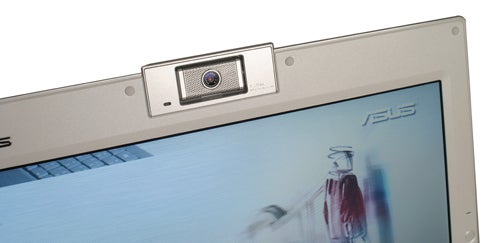
The camera does swivel round 180 degree, which is useful if you want to show something other than yourself, but the bezel still seems bigger than it needs to be. It’s a shame though that the bezel at the top is so thick – it does spoil the otherwise smart lines. At least there are controls for activating the camera and taking pictures built directly into the bezel on the right.
Visually, the strip underneath the screen containing the speakers is attractive. The power button with a glowing blue backlight is very cool, as is the thin blue strip that lights up between the two mouse buttons in the track pad. The power and the hard disk activity lights on the bottom left are also eye catching.
But the W5J doesn’t just appeal for its magpie attracting abilities though. The keyboard is one of the most crucial areas of a notebook and the one on the W5F is as good as it gets on a machine this small. The typing action is firm, helped by the solid construction of the notebook as a whole. The enter, shift, and backspace buttons are reasonably sized, and the Delete, Page Up/Down and arrow keys are all logically placed, which meant I was typing at speed and navigating my documents quickly after only a few minutes. With some notebooks it takes ages to get used to their idiosyncrasies. 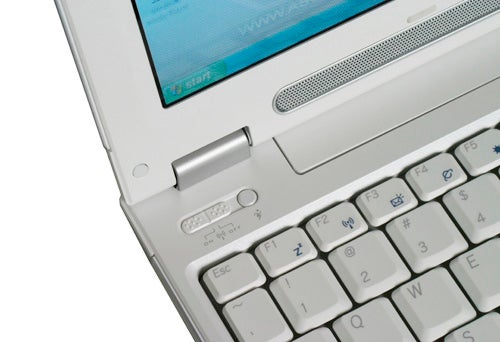
As a Centrino notebook 54a/b/g Wi-Fi is of course built in, along with Bluetooth 2.0 and both of these can be easily switched on and off at the flick of a switch located above the keyboard on the left.
The are three USB ports on the notebook, sensibly located all round it, one on the left, one right and one at the rear. The DVD-Writer is located on the left along with a FireWire port and Ethernet and modem ports. There’s also a card reader that can accept SD, MMC and Memory Stick cards.
The right hand side is home to a VGA out and headphone and microphone ports. There’s also a physical volume control, which is so much more convenient than having to press a Function key and then the keyboard. The line out also doubles up as an SP/DIF, giving you digital output for a surround processor.
One issue is that there’s an Express card slot rather than a PC Card slot. This is great for future proofing but not so great for ‘now’ proofing. For example there’s no Express card 3G data cards on the market yet so if you need one this notebook won’t be any use to you. Round the back, you’ll find an S-Video out.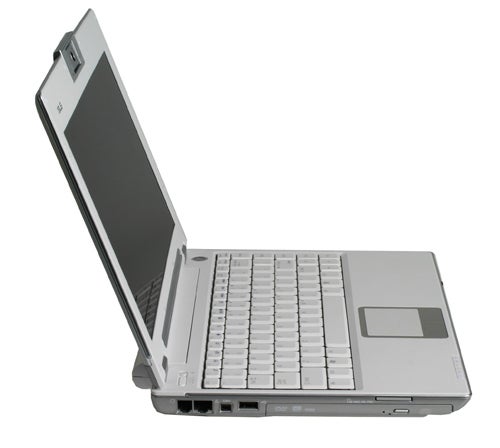
The chipset the Core Duo sits in is an Intel 945GM Express, which means that you get Intel integrated graphics which isn’t any use for gaming, but perfectly fine for everything else.
Video playback in particular is enhanced by the glossy contrast enhancing coating on the 12.1 inch screen. However, when watching a film in a darkened room the display backlight reflected back onto the screen, reducing effective black levels. However, watching the strong colours and visceral fast action of Kill Bill: Volume One, was still an engaging experience. 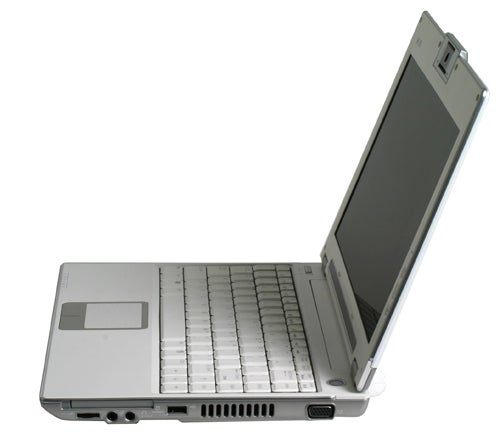
When it comes to performance, I chose to compare it to the Sony SZ1VP which we reviewed here. This is admittedly a more expensive notebook and is lighter, offers both Intel and nVidia graphics and has a larger hard disk. It does have the same CPU but has twice the memory complement. However, this comparison does give a good indication of the difference between going for something top-end or choosing something a bit more affordable.
In SYSmark 2002, the Asus lags behind overall – probably down to the relative lack of memory in the supplied configuration, but upgrading at time of purchase would sort that out. Confusingly the overall PC Mark 05 score is higher than the Sony, despite being slower in three of the four tests. 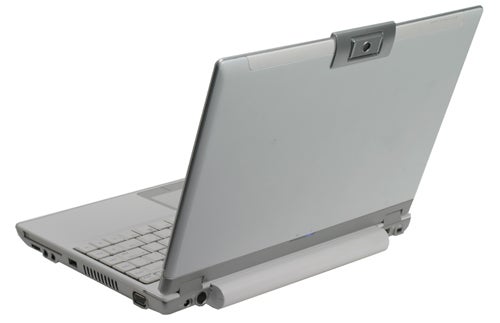
Moving along swiftly we come to the MobileMark 2005 score where we see that the Asus lags behind in each of the three tests with 171 minutes in the DVD playback test, so it wouldn’t quite make it to the end of a three hour movie. There’s nothing special about these scores but the Asus does have one trick up its sleeve – in the box is an extended life battery – and it’s that that’s attached in the pictures. However, it does add a bit of bulk and weight, though even with it, it is still a very portable notebook.
Yes, if you can afford the Sony SZ1VP, it’s the better machine, but there’s a significant price difference. If you’re looking for a more affordable small and light notebook to take with you on your travels, then the Asus is a good bet. It will fit in your bag, it’s got a good enough display, and decent battery life and some nice touches such as the webcam and wireless switch buttons. It also looks good and is great to type on and thanks to the Core Duo it always feels snappy and responsive. With the street price likely to be less than the quoted price, this could be a notebook that hits the spot for both work and entertainment on the move.
”’Verdict”’
With a 2GHz Core Duo processor under the hood this is an ultra portable machine that isn’t ‘just for girls’ despite the ice white looks. A good choice if you’re budget can’t stretch to a Sony SZ1VP, though be sure to upgrade the RAM to 1GB.
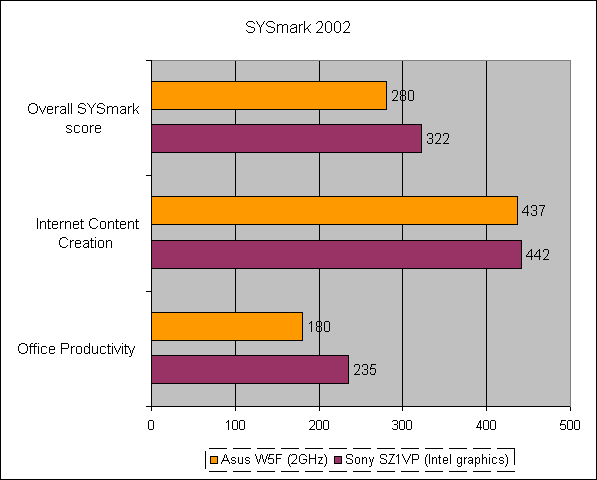
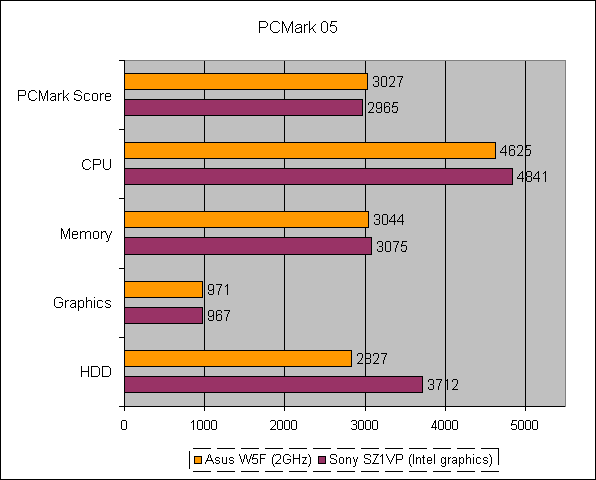
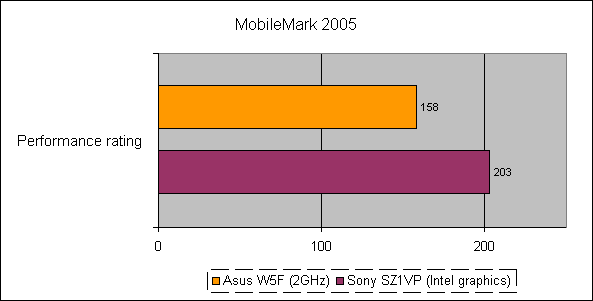
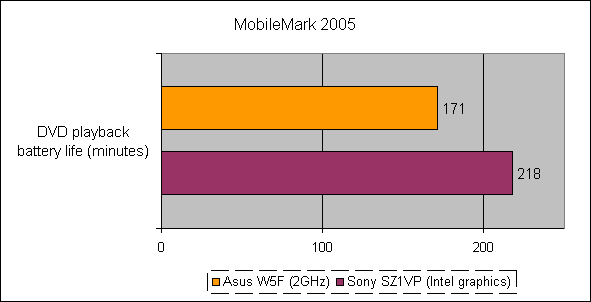
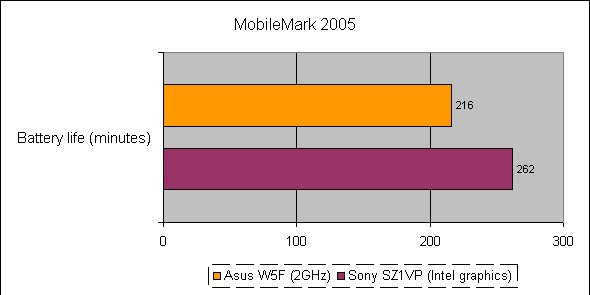
How we test laptops
Unlike other sites, we test every laptop we review thoroughly over an extended period of time. We use industry standard tests to compare features properly. We’ll always tell you what we find. We never, ever, accept money to review a product.
Trusted Score
Score in detail
-
Performance 8
-
Value 8
-
Features 8

